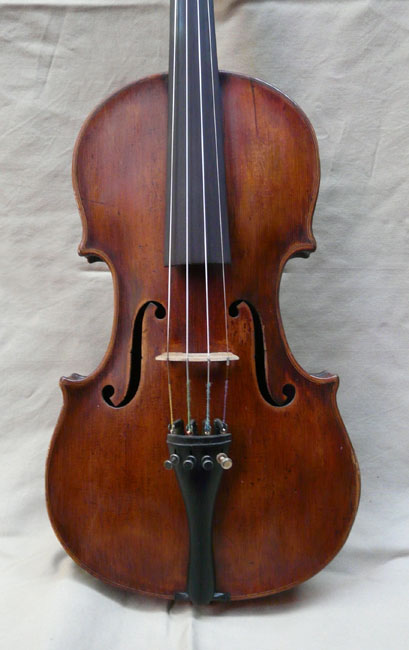
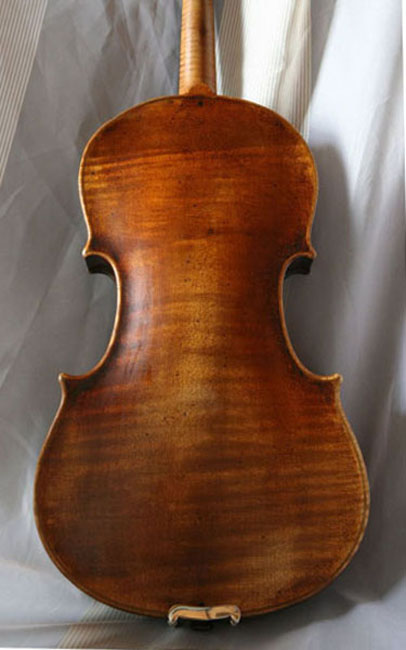
Beautiful Old Strad Copy |
My guess is that this very good 'bench copy' was made around 1850, most likely a Schweitzer reproduction. The facsimile label states that it is a copy of a Stradivarius with what appears to be 1714 or 1717, as the last penned number is not terribly clear. I was able to indentify three Strads with a one piece back of slightly ascending flame (from coffee table books and photos on the net) -- the 1717 'Gariel', the 1719 Lauterbach and the 1723 Keisewetter. What I find most alluring is its backside -- the interplay of the modelling with his choice of cut produces a certain sensuousness. The table is extremely tight grained spruce with an oil varnish of honey brown with a slight orange tint. |
 |
 |
Ab.R, the back shows locator pins into the blocks at twelve and six. The original varnish now has a soft patina with a touch of cracqeleur in small areas of the back and ribs. Ab.L, the dark line in the plate below the treble shoulder is a facked crack, part of the reproduction process. |
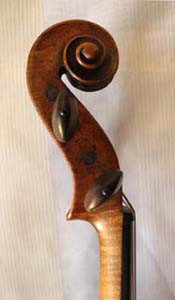 |
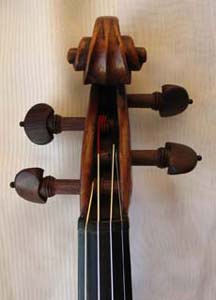 |
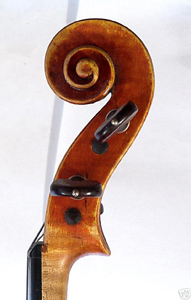 |
The volutes are deep and well carved and the rosewood pegs are well fit. |
 |
The neck is at the proper elevation and cant. The strings are at just the right height off the fingerboard. The profile shows a gradual rise and a nice fullness to both the belly and the back. |
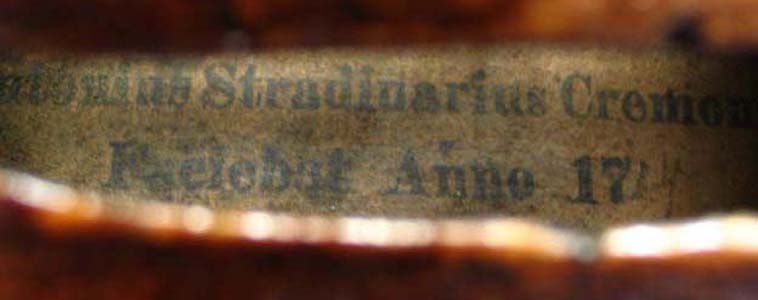 |
The facsimile label is still intact and readable. I read it as 1714. |
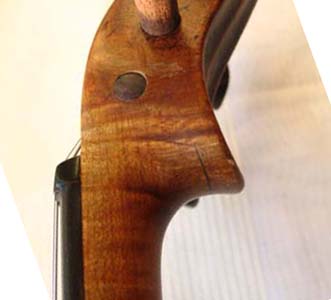 |
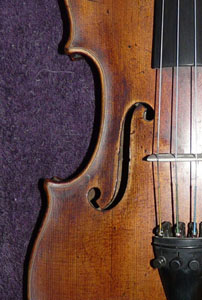 |
the locator pin in the bottom block, and the simulated graft |
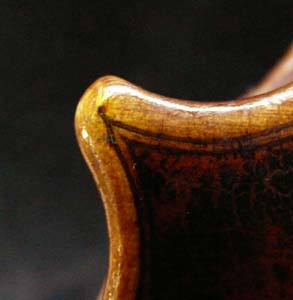 |
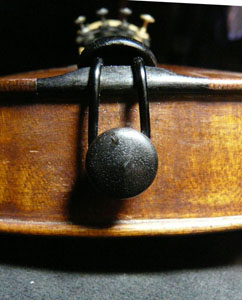 |
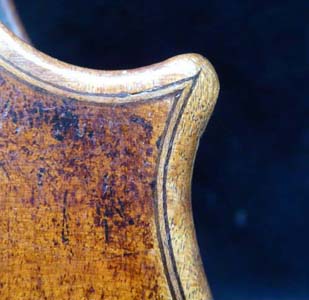 |
Above, the bee stings and the tail button. Below, cracqueleure. |
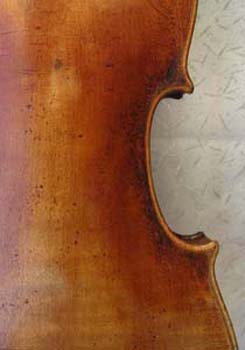 |
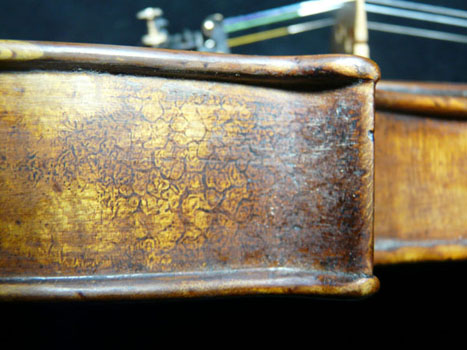 |
MEASURMENTS |
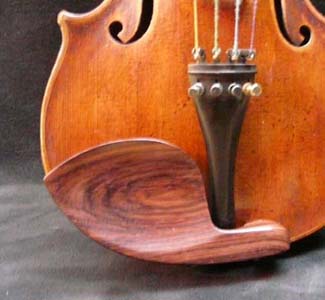 |
SOUND & PLAYABILITY |
return to the gallery page by clicking the link below http://stnichsigns.com/Makers'Orphans.html |